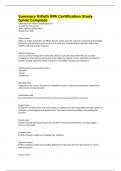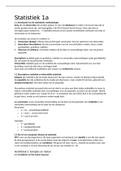Exam (elaborations)
Summary UiPath RPA Certification Study Guide Complete
- Course
- Institution
Summary UiPath RPA Certification Study Guide Complete automation first three-pronged approach -A robot for every person -Open and free collaboration -Robots learn skills UIPath Studio Helps you design automation workflows visually, quickly and with only basic programming knowledge. Where...
[Show more]




